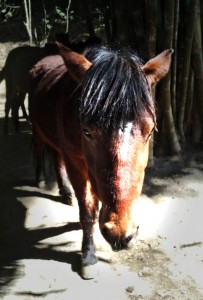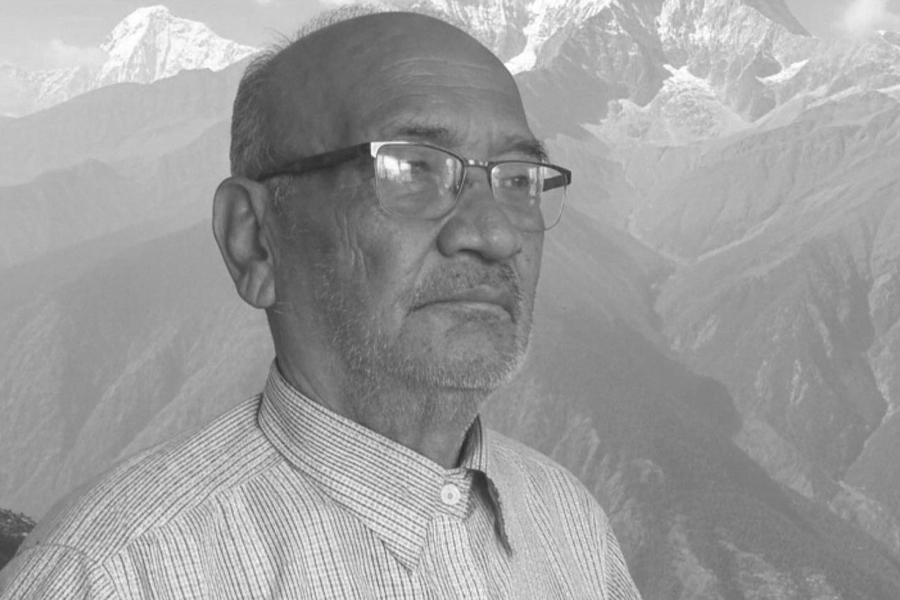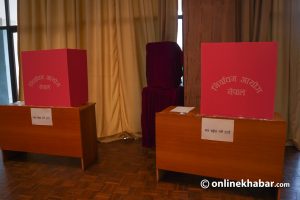On a recent bumpy ride on the outskirts of Kathmandu, we passed through several brick kilns. The dark black smoke hovering in the skyline marked their existence from several miles away. We were on our way to the Donkey Sanctuary at Badikhel, some twenty minute drive from Patan.
A friendly mule greeted me at the gate of the sanctuary; it was a beautiful respite for abandoned equines. Mules grazed languidly and moved towards us shyly. Shiva, who happened to be one of the newest residents of the sanctuary, mistook my brown leather notebook for a treat and bit it.
“This one’s a new resident,” says Uttam Kafle, Executive Director of Animal Nepal. “Buddy”, one of the oldest residents at the sanctuary, contently lounged on the ground, basking in the sun, while the rest of the residents roamed around.
On the further side of the compound, three mules had been kept separately.
“ When they first came to the sanctuary, we didn’t think they would survive. They had multiple injuries on their body, besides being blind. One of their friends died but the rest survived,” says Shanta Bahadur Shrestha, the caretaker of the sanctuary who works there with his wife.
The couple have been working at the sanctuary for nearly three years now and knows each and every equine like they were their children.
The sanctuary was conceived by Animal Nepal as a respite for equines that work in brick kilns in various parts of Nepal. All animals at the sanctuary were abandoned by their owners because they were unfit for work. The sanctuary is their last resort.
“There are many brick kilns in and around Kathmandu that many are not even aware of,” Kafle shares. “Even if they have seen brick kilns from a distance, they are totally unaware that equines work in those kilns.”
I insisted we stop by one of the kilns to see the equines at work. We could see an entire hillock a little further away; it was decorated, in small sections, with raw bricks that piled up in a neat line. Labourers, mostly women, hard at work, were busy, and oblivious to anything but the work at hand.
***
Every year, the bricks are molded in these kilns from November onward for which the animals and laborers are hired from July/August.
These brick kilns deal through a “naike”, or middlemen. The naikes have a deal with the brick kiln owner to provide the animals and labourers. They contract equine owners on the basis of the total number of bricks they can transport to the brick kiln. The owners then hire an equine handler to take care of the animals.
Usually, the animals have to carry 1,000 bricks per day. And when one of the equine gets injured or dies, that’s when they start overloading the remaining animals.
When one of the equine gets injured or dies, that’s when they start overloading the remaining animals.
Each brick kiln has around two to three equine owners who each own around 20 to 25 animals. Horses and mules cost around Rs.1 lakh each while donkeys cost Rs. 25,000. When their animals fall sick or die, the equine owners have a lot to lose. They buy the animals taking out loans and if they cannot deliver the said number of bricks, they don’t get paid.
For each trip, they get paid around Rs. 400-600 *per day, depending upon the distance. “That’s why they start loading the animal beyond what they can carry,” says Kafle.
Equines are bought from India and the equine owner at the brick kilns are either from Nepalgunj or India, while the handlers are mostly unskilled labourers from India.
I was informed that of the 20-25 animals, a few always die or get injured beyond treatment. The surviving animals, mostly horses and mules, are again sold but the donkeys are usually abandoned since they don’t have much value.
***
Animal Nepal’s humane education programme is targeted toward these equine owners. They include training, educational activities and forming micro-credit groups.
“We teach them how to take care of their equines and give instructions about properly making saddles,” Kafle says.
“Training on making a proper saddle is given because in most of the brick kilns Animal Nepal visited, the usual injury was due to improperly made saddles,” he explains.
The equine owners are helped in the formation of micro-credit groups as most of the mistreatment happens due to the equine owners financial condition. “They have to payback their loans which is why they load the animals. If we can make them financially stable this would not happen so much,” states Kafle.
“More importantly, these owners are taught to respect the animals and realise their importance as most of the families are dependent on the work of the donkeys.”
Training on making a proper saddle is given because in most of the brick kilns we visited, the usual injury was due to improperly made saddles.
Animal Nepal also provides free clinics to various brick kilns in Nepal. I missed the team by minutes as they had left to conduct a health clinic in Dhading. The Donkey Sanctuary team has a vet doctor, four technicians, and two caretakers.
On our way back, we came across a lone mule at Hari Siddhi, eating grass at the busy road side. It carried the tell-tale signs of a saddle injury.
“ We have a database of brick kiln owners in this area and around Godavari,” Kafle says. “I’ll check the register and make a few phone calls to find out who this mule belongs too.”
Shiva just might get another friend.
*Added for clarity.

























